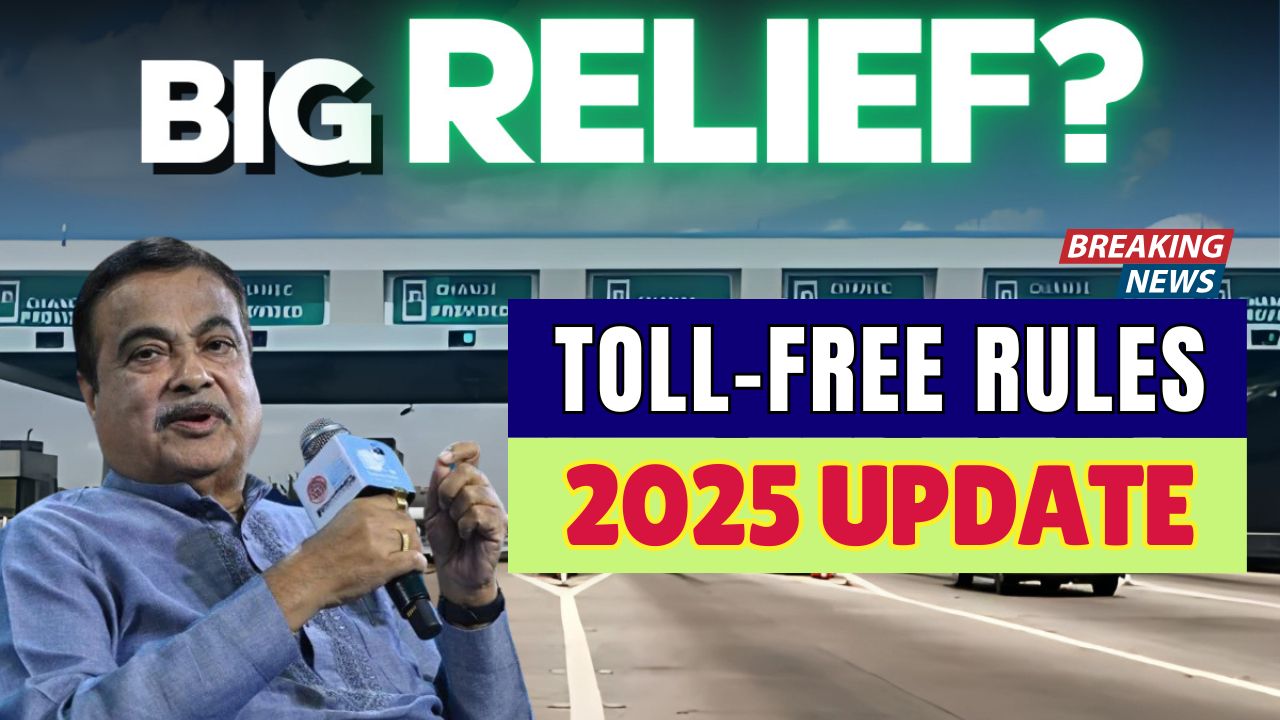In a landmark move aimed at easing the burden on everyday commuters and enhancing road connectivity, the Government of India has officially removed toll charges on several national and state highways across the country. This decision is expected to benefit millions of travelers by improving access, reducing travel costs, and decongesting toll booths.
The Ministry of Road Transport and Highways has identified over 120 stretches of road that are now completely toll-free, offering significant relief especially to those who travel frequently for work, logistics, or pilgrimage.
Key Toll-Free Routes Announced
Among the most notable roads now toll-free are stretches that serve strategic, religious, and economically important purposes. In the North, the road from Jammu to Udhampur (part of NH-44) has been made toll-free to support easier access to remote and defense-critical zones. Pilgrimage routes such as Nashik to Trimbakeshwar in Maharashtra, and Faizabad to Prayagraj in Uttar Pradesh, have also been exempted from tolls, allowing smoother travel for religious gatherings and festivals.
In the Northeast, the Guwahati to Tezpur highway now allows uninterrupted travel, helping during monsoon flood relief operations. Similarly, the Mysore-Wayanad eco-sensitive corridor in the South has been exempted from tolls to support environmental preservation while promoting tourism.
Other toll-free routes include the Amritsar to Wagah Border road in Punjab, enhancing accessibility for tourists, and sections of NH-310 in Sikkim, which are vital for defense logistics near the India-China border.
Why These Routes Were Chosen
The toll exemption isn’t arbitrary. These routes were chosen due to their critical importance in regional development, defense movement, religious significance, and socio-economic integration. Many of them witness high volumes of daily commuters or seasonal travelers, and toll collection was causing bottlenecks, increased fuel use, and public discontent.
This step is also seen as part of a broader strategy to ensure that essential routes, especially those catering to lower-income populations or rural areas, remain accessible without financial barriers.
Impact on Daily Commuters and Local Economies
For regular travelers and transporters, the toll-free roads mean substantial savings. A daily commuter previously spending thousands per month on tolls can now expect significant relief. It also encourages more frequent travel for business and leisure, potentially boosting local tourism and regional trade.
Small businesses that rely on road transport for goods delivery can now reduce logistics costs, making their services more competitive. The ripple effect of this cost-saving initiative is expected to stimulate local economies, particularly in Tier 2 and Tier 3 cities connected by these roads.
Urban and Regional Benefits
In metro regions like Delhi-NCR, toll-free status on select stretches of the Eastern Peripheral Expressway and connecting state highways has begun reducing congestion and travel delays. Maharashtra’s toll-free city connectors between Mumbai, Thane, and Navi Mumbai are streamlining urban mobility.
In southern states, toll exemptions across intercity roads in Karnataka, Kerala, and Tamil Nadu are expected to increase weekend and seasonal travel, strengthening the local hospitality and transport sectors.
Future of Toll Collection: A Digital Shift
While this move marks a departure from traditional toll practices, the government is not discarding toll collection altogether. Plans are underway to replace manual and plaza-based tolls with a GPS-based tolling system. This futuristic model will charge travelers based on the exact distance they travel, reducing the need for physical infrastructure and eliminating long queues at toll booths.
Such innovations are expected to make tolling smarter and more efficient, with real-time tracking and transparent billing mechanisms.
Conclusion: A Win for the People
The decision to remove toll charges on these key routes signals a strong commitment to citizen-centric infrastructure. It not only alleviates financial stress for travelers but also improves connectivity and national integration. As more roads are expected to be added to the toll-free list, India could be headed toward a more seamless and inclusive travel experience across states.
Travelers are advised to stay updated through the National Highways Authority of India (NHAI) and regional transport websites to confirm the status of specific routes.




